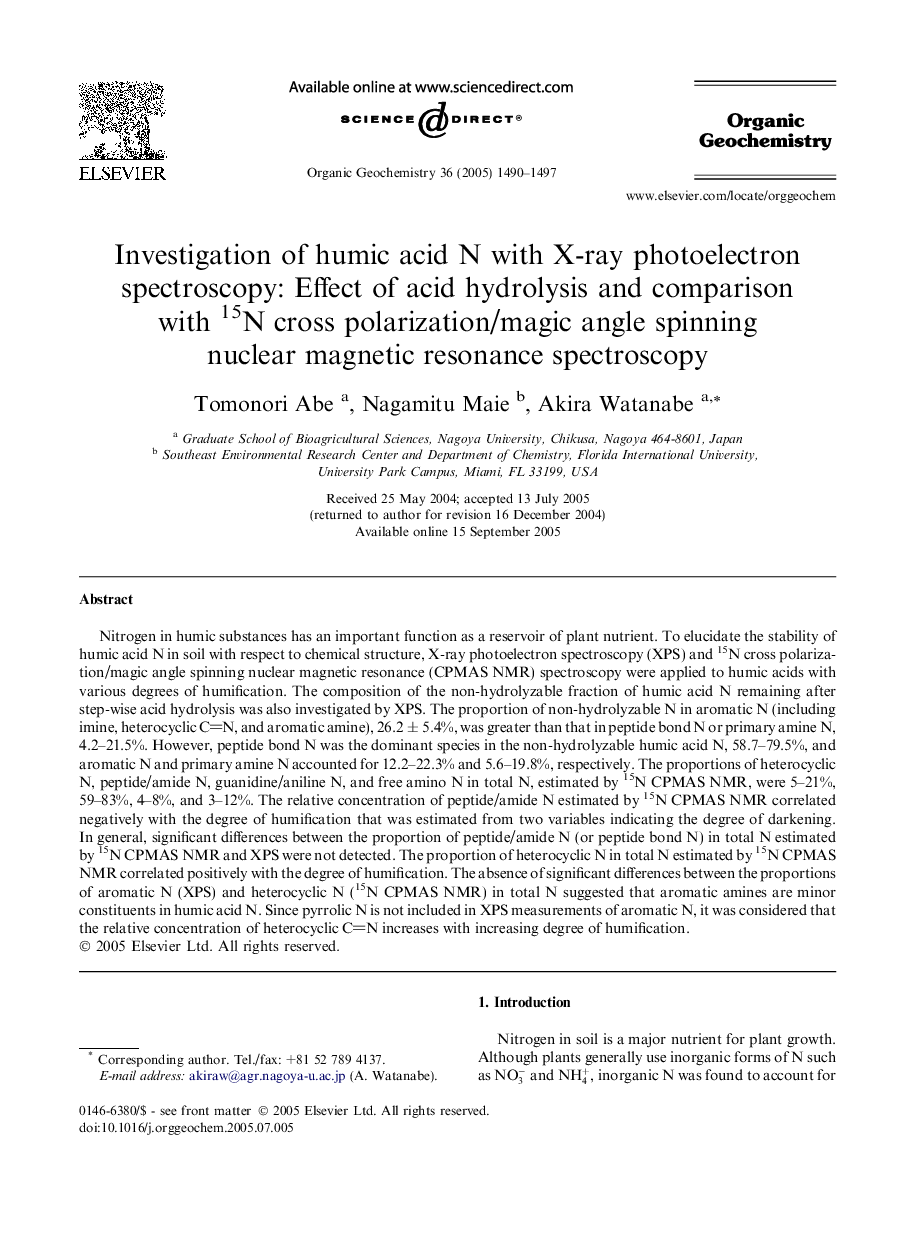| Article ID | Journal | Published Year | Pages | File Type |
|---|---|---|---|---|
| 9556274 | Organic Geochemistry | 2005 | 8 Pages |
Abstract
Nitrogen in humic substances has an important function as a reservoir of plant nutrient. To elucidate the stability of humic acid N in soil with respect to chemical structure, X-ray photoelectron spectroscopy (XPS) and 15N cross polarization/magic angle spinning nuclear magnetic resonance (CPMAS NMR) spectroscopy were applied to humic acids with various degrees of humification. The composition of the non-hydrolyzable fraction of humic acid N remaining after step-wise acid hydrolysis was also investigated by XPS. The proportion of non-hydrolyzable N in aromatic N (including imine, heterocyclic CN, and aromatic amine), 26.2 ± 5.4%, was greater than that in peptide bond N or primary amine N, 4.2-21.5%. However, peptide bond N was the dominant species in the non-hydrolyzable humic acid N, 58.7-79.5%, and aromatic N and primary amine N accounted for 12.2-22.3% and 5.6-19.8%, respectively. The proportions of heterocyclic N, peptide/amide N, guanidine/aniline N, and free amino N in total N, estimated by 15N CPMAS NMR, were 5-21%, 59-83%, 4-8%, and 3-12%. The relative concentration of peptide/amide N estimated by 15N CPMAS NMR correlated negatively with the degree of humification that was estimated from two variables indicating the degree of darkening. In general, significant differences between the proportion of peptide/amide N (or peptide bond N) in total N estimated by 15N CPMAS NMR and XPS were not detected. The proportion of heterocyclic N in total N estimated by 15N CPMAS NMR correlated positively with the degree of humification. The absence of significant differences between the proportions of aromatic N (XPS) and heterocyclic N (15N CPMAS NMR) in total N suggested that aromatic amines are minor constituents in humic acid N. Since pyrrolic N is not included in XPS measurements of aromatic N, it was considered that the relative concentration of heterocyclic CN increases with increasing degree of humification.
Related Topics
Physical Sciences and Engineering
Chemistry
Organic Chemistry
Authors
Tomonori Abe, Nagamitu Maie, Akira Watanabe,
